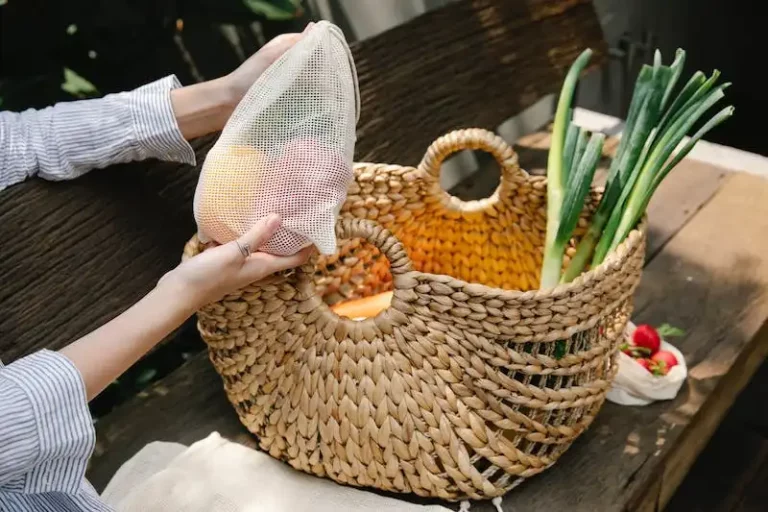Strawberries are a delicious and full-flavored fruit that can be grown in your own garden. They can be somewhat delicate plants to grow, but with careful preparation and the use of specific growing strategies, you can have a healthy and bountiful harvest. In this article, we will show you how to keep your strawberries healthy and productive.
First and foremost, it is important to choose the right variety of strawberries to grow. There are day-neutral varieties, which produce fruit continuously throughout the growing season, and June-bearing varieties, which produce a large harvest all at once. Both types have their advantages, so choose the one that suits your needs best.
When it comes to preparing your garden for strawberries, make sure to choose a sunny spot with well-drained soil. Remove any weeds and add organic matter, such as compost or well-rotted manure, to promote healthy growth. Dig a hole deep enough to hold the crown of the plant, leaving the strawberry plant crown slightly above the soil level.
Once your strawberries are planted, it is important to take care of them throughout the growing season. Regularly water your plants to keep the soil moist but not waterlogged. Be careful not to overwater, as this can lead to powdery mildew and other diseases. Mulching around the plants can help retain moisture and suppress weed growth.
Fertilizing strawberries is also an important thing to consider. Before planting, incorporate a balanced fertilizer into the soil. Once the plants start growing, use a low-nitrogen fertilizer every few weeks to provide them with the necessary nutrients. Be sure to follow the package instructions for the best results.
Another important aspect of strawberry care is pest control. Inspect your plants regularly for any signs of bugs or diseases. Remove any bugs or damaged fruits immediately to prevent them from spreading. There are also certain pest-beating varieties of strawberries available, which can help you avoid common strawberry pests.
Finally, when it’s time to harvest your strawberries, be patient and careful. Pick the ripe fruits gently by holding the stem just above the fruit and pulling it back. Strawberries are delicate fruits and can be easily damaged, so handle them with care. If you have more strawberries than you can eat, they can be stored in the refrigerator for up to two weeks.
Growing your own strawberries can be a rewarding experience, and with the right preparation and care, you can enjoy a bountiful harvest of delicious fruits. Follow these tips and strategies to ensure a successful strawberry growing season in your own garden.
Growing Strawberries
In general, strawberries are well-suited to garden groups that enjoy testing new ideas and strategies. They are best suited for gardens that receive daily sun and have well-drained soil. Strawberries thrive in cool morning temperatures, so it’s important to plant them in a location that gets plenty of morning sun but provides some afternoon shade during the hot summer/fall months.
There are different types of strawberries, including June-bearer, everbearing, and day-neutral varieties. June-bearer strawberries produce a single harvest period in late spring or early summer, while everbearing varieties produce multiple harvests throughout the growing season. Day-neutral strawberries, on the other hand, produce fruit consistently throughout the entire growing season.
When growing strawberries, it’s important to remove runners, the long stems that develop from the main plant. This helps redirect energy towards fruit production instead of further plant development. Additionally, strawberries can be grown from bare-root plants or purchased in pots from a garden center.
Proper care and cultivation are essential for the successful growth of strawberries. They require regular irrigation, adequate nutrition, and protection from pests and diseases. Mulching and removing weeds can help maintain moisture, preserve soil temperature, and minimize weed competition. If necessary, strawberries can also be grown in containers or hanging baskets.
During the harvesting period, it’s important to pick strawberries when they are fully ripe and have reached their highest flavor potential. Strawberries can be harvested by gently pulling the ripe fruits from the crown of the plant. After harvesting, it is recommended to wash the strawberries with a mild detergent or a fruit and vegetable wash to remove any dirt or pesticide residue.
Overall, strawberries are a versatile fruit that can be grown in a variety of settings, from large-scale commercial farms to small home gardens. With proper care and attention, they can yield a bountiful harvest and provide a delicious addition to any diet.
Strawberry Varieties
When it comes to growing strawberries, there are many different varieties to choose from. Each variety has its own unique characteristics and growing requirements. Some popular strawberry varieties include:
- Day-Neutral Strawberries: These strawberries produce fruit continuously throughout the growing season, regardless of the day length. They are known for their sweet flavor and are a great choice for those who want a steady supply of fresh strawberries.
- June-Bearing Strawberries: These strawberries produce a large harvest of fruit over a period of a few weeks in late spring or early summer. They are known for their large size and delicious flavor. June-bearing strawberries are often used for canning or freezing.
- Everbearing Strawberries: These strawberries produce fruit in two or three periods throughout the growing season. They are similar to day-neutral strawberries but may have a slightly longer harvest period.
Before choosing a strawberry variety, it’s important to consider your growing conditions, including your climate and the amount of sunlight your garden receives. Some varieties may be better suited to certain climates or growing conditions than others.
When planting strawberries, it’s important to provide them with well-drained soil and full sun. They should be planted at a depth of about 6 to 8 inches, with the crown of the plant at the surface of the soil. The plants should be spaced about 12 to 18 inches apart in rows that are 36 to 48 inches apart.
Fertilizing strawberries is also important for their growth and fruit production. Strawberries can be fertilized using organic matter, such as compost or well-rotted manure. Fertilizer should be applied in early spring and again after the plants have finished bearing fruit.
One common problem that strawberry growers may encounter is the presence of pests, such as bugs or diseases. In order to prevent these problems, it’s important to remove any diseased or damaged plants as soon as they appear. Regularly checking for signs of pests, such as gray mold or powdery mildew, can also help prevent the spread of diseases.
When harvesting strawberries, it’s best to pick them when they are fully ripe. Ripe strawberries are bright red and have a sweet aroma. They should be gently picked from the plant, with both the stem and green cap intact. It’s important not to leave any strawberries behind, as they can attract pests and diseases.
Once harvested, strawberries should be stored in the refrigerator and eaten within a few days for the best flavor. Strawberries can also be frozen for later use in smoothies, desserts, or jams.
In conclusion, there are many different varieties of strawberries to choose from, each with their own unique characteristics and growing requirements. Whether you choose day-neutral, June-bearing, or everbearing strawberries, you’re sure to enjoy the delicious taste of homegrown strawberries.
For additional resources on growing strawberries, check out the following websites:
- http://extension.usu.edu/publications
- http://extension.oregonstate.edu/growing-strawberries
- https://extension.illinois.edu/strawberries
- https://extension.unh.edu/resources/files/Resource005611_Rep816.pdf
When to Plant
When it comes to growing strawberries, the timing of planting is crucial. While you can plant strawberries at any time of the year, there are certain times that are more ideal for successful growth and fruiting.
For most varieties of strawberries, it is typically best to plant them in the spring. The exact timing will depend on your specific variety and location. In general, you can plant strawberries just after the last frost date in your area, when the soil has warmed up and the risk of freezing temperatures has passed.
Some strawberry varieties are day-neutrals, meaning they can be planted at any time of the year as long as the soil and weather conditions are suitable. These day-neutral varieties are popular for their ability to produce fruit continuously throughout the growing season.
Before planting strawberries, proper preparation is necessary. Start by selecting the best strawberry plants or crowns to ensure the highest yield. It is best to buy certified disease-free plants from a reputable source, or you can propagate your own plants from runners if you have experience. If you are a beginner, it is recommended to buy established plants for easier cultivation.
When planting strawberries, choose a location that receives full sun for at least 6-8 hours a day. The soil should be well-drained and fertile, rich in organic matter. Before planting, remove any weeds or grass from the area, as weeds can compete for nutrients and moisture. Consider adding compost or other organic matter to improve soil fertility.
In Utah, where the climate is somewhat cool, the best time to plant strawberries is in early spring, usually around late April to early May. This allows the plants to establish well before the hotter summer months. Proper timing can reduce the risk of problems like crown rot or poor fruiting.
Once the strawberries are planted, regular watering and food management are essential for their growth. Provide enough water to keep the soil consistently moist, but be careful not to overwater, as soggy conditions can lead to root rot or other diseases. Mulching around the plants can help conserve moisture and regulate soil temperature.
Strawberries are ready for harvest when they are fully ripe and have developed their characteristic red color. The fruit should easily pull off the plant without resistance. Take the opportunity to pick them in the morning when the berries are cool and at their best flavor. If you are growing day-neutral varieties, you can expect to harvest strawberries throughout the growing season.
In summary, choose the best time to plant strawberries based on the variety and your location. Proper preparation and selection of disease-free plants will set the stage for successful growth. Provide the necessary sunlight, water, and food management to ensure healthy plants and the highest yield. Harvest the delicious fruits when they are fully ripe for the best flavor.



